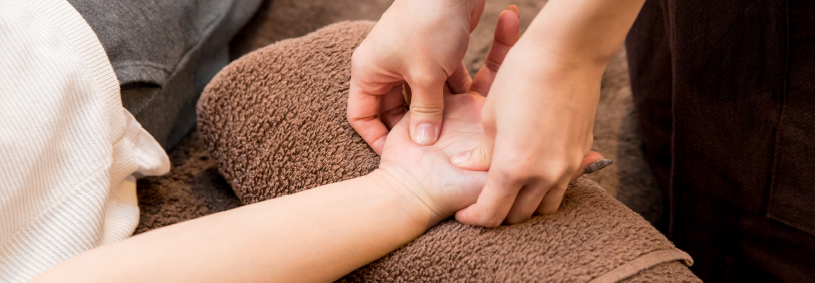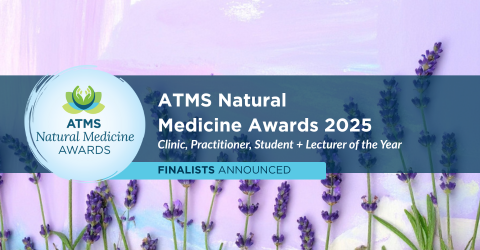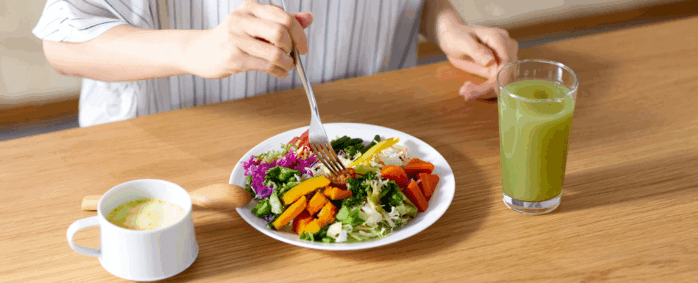Infant Massage: Nurturing Connection, Calming Bodies, Supporting Growth
- Blog
- Infant Massage: Nurturing Connection, Calming Bodies, Supporting Growth

Touch is a baby’s first language. Long before words, infants learn safety, comfort, and belonging through the warmth of a parent’s hand. Massage harnesses this simple truth. For massage therapists, it represents a gentle but powerful modality to share with families. For parents, it can become a daily ritual of bonding and reassurance. And as the research grows, so does our understanding of the physical and emotional benefits of infant massage.
In this blog, we’ll look at what infant massage is, the benefits it offers, the evidence that supports it, and how both practitioners and parents can approach it safely.
What is Infant Massage?
Infant massage involves the gentle, rhythmic stroking of a baby’s body using the hands, sometimes with natural oils to reduce friction. It can include the arms, legs, back, chest, and face, with pressure and pace adjusted according to the baby’s responses.
Massage for infants is not a new idea – it has deep roots in many cultures, from Indian Ayurvedic practices to Polynesian and African traditions. What has shifted is the scientific attention it now receives. Today, infant massage is used both in the home and in clinical settings, especially with pre-term or medically fragile babies.
Benefits for Babies
Calming and sleep
Studies suggest that massage can reduce crying, settle infants, and improve sleep patterns (Cochrane Review, 2022). The simple act of soothing strokes lowers cortisol (the stress hormone) and can help regulate an infant’s nervous system.
Growth and digestion
Massage has been associated with improved weight gain and shorter hospital stays for preterm infants, likely due to increases in vagal activity and gastric motility. Parents also often report reduced colic and smoother digestion after gentle abdominal massage (Field, 2019).
Immunity and motor development
A classic study by Diego et al. (2007) found that moderate-pressure massage in preterm infants increased vagal activity and gastric motility, both linked to weight gain (Diego et al., 2007).
Broader reviews like the narrative review (Field, 2019) suggest possible benefits for digestive function and immune outcomes, while the 2022 systematic review Garmy et al., 2022) confirms positive effects on weight gain, jaundice reduction, and pain relief.
Benefits for Parents
Massage is not only for the baby – it also supports the parent. Mothers who massage their babies regularly often report reduced anxiety, improved mood, and greater confidence in their caregiving role (Garmy et al., 2022). Fathers, too, describe it as a way of bonding more deeply with their child in the early months.
Physiologically, infant massage has been associated with increase oxytocin (the “bonding hormone”) in both parents and babies, reinforcing a sense of connection (Field, 2019).
For Massage Therapists: Scope of Practice
For practitioners, infant massage offers an opportunity to empower parents rather than take over the hands-on role. Teaching safe, simple strokes in a class or one-to-one setting can build parental confidence and strengthen family wellbeing.
Points to consider:
- Education over treatment: Unless you are trained in paediatric massage, your role is to guide parents, not to treat infants directly.
- Medical red flags: Always advise parents to consult their GP or paediatrician if their baby has underlying medical issues, fever, skin conditions, or they are uncertain.
- Integration: Infant massage can complement broader wellness and parenting programs, including antenatal classes, mother’s groups, or family health clinics.
By offering workshops or partnering with maternal health services, therapists can extend their impact while staying within safe professional boundaries.
For Parents: How to Begin
Parents don’t need special equipment or expertise – just a willingness to tune into their baby’s cues. A few practical guidelines:
- Choose the right time – when your baby is alert, content, and not just fed.
- Create a warm, quiet space – reduce distractions and ensure baby is comfortable.
- Use gentle oils – cold-pressed, edible oils like coconut or grapeseed are often recommended. Do a patch test first.
- Follow your baby’s cues – if they turn away, stiffen, or cry, pause and try again later.
- Keep it short and sweet – start with 3–5 minutes, gradually increasing as baby becomes used to it.
Many parents find that over time, massage becomes part of the bedtime routine, supporting calm sleep and providing a precious opportunity to connect.
Bringing It Together
Whether you are a therapist teaching new parents or a parent beginning the journey yourself, infant massage is a simple practice with profound effects. It soothes, connects, and supports healthy growth, while reminding us of the oldest truth in human development – that nurturing touch matters.
For massage therapists, it offers an opportunity to share knowledge and empower families. For parents, it can become a daily ritual that not only calms but strengthens the invisible threads of attachment.
Resources
- Cochrane Review: Massage for promoting mental and physical health in infants under age six months (2022)
- Garmy, P. et al. (2022). Effects of Infant Massage: A Systematic Review. International Journal of Environmental Research and Public Health.
- Field, T. (2019). Infant massage therapy research review. Complementary Therapies in Clinical Practice, 34, 262–276
- Diego, M. et al. (2020). Vagal activity, infant massage, and growth. Early Human Development. Read here
- Randomised Controlled Trial (2024): Effects of infant massage on infant attachment security.
More about the author

Rakhee Dodhia
Rakhee is a Remedial Massage Therapist, with a practice in Bilgola, on the Northern Beaches of Sydney – Sacred Space Healing. Of Indian origin, Rakhee, grew up surrounded by the ancient healing world of Ayurveda and has developed a keen interest and practice of the same.
https://www.sacredspacehealing.com.au/
Other Blog In This Category

ATMS extends a huge congratulations to all the finalists in our annual Natural Medicine Awards!

